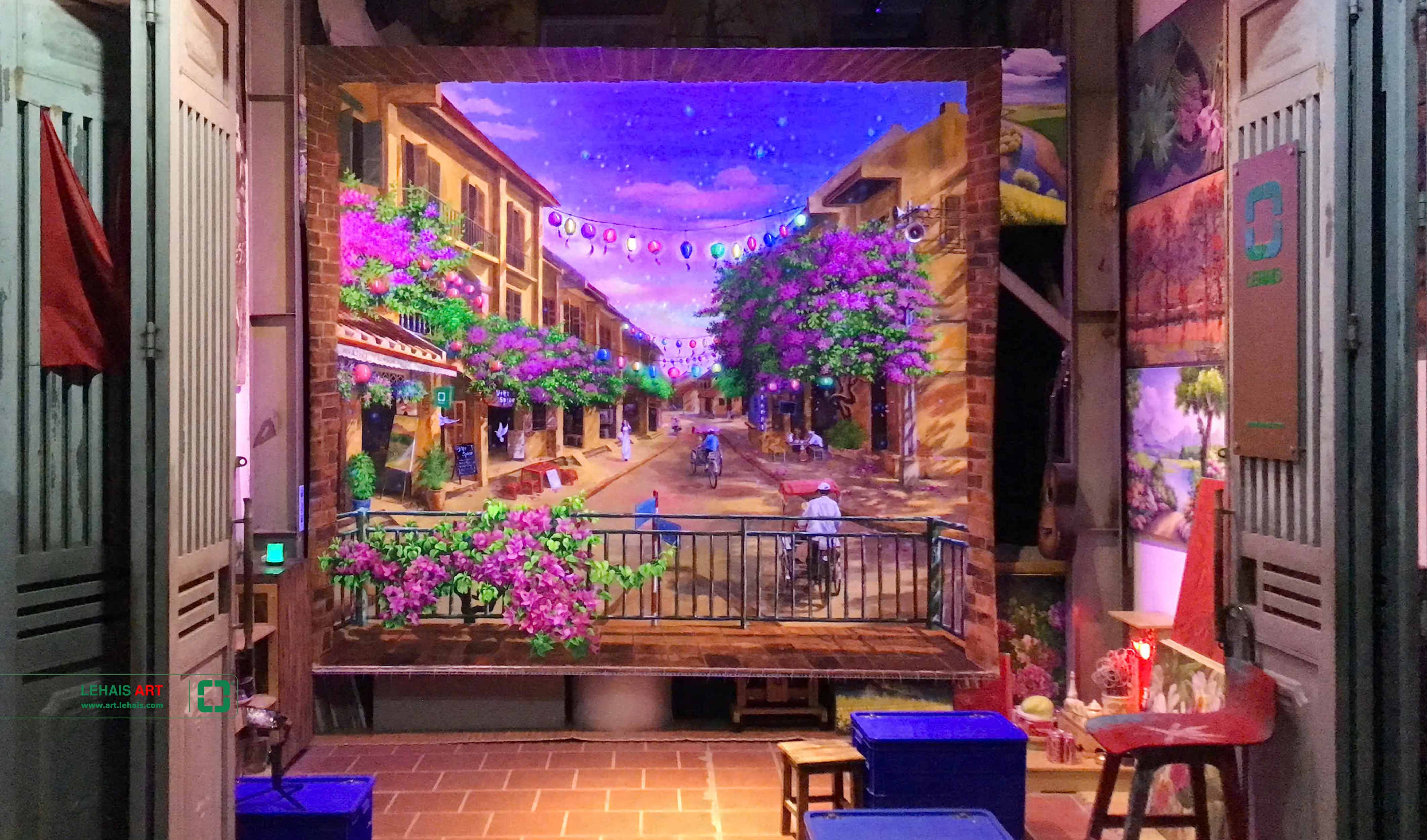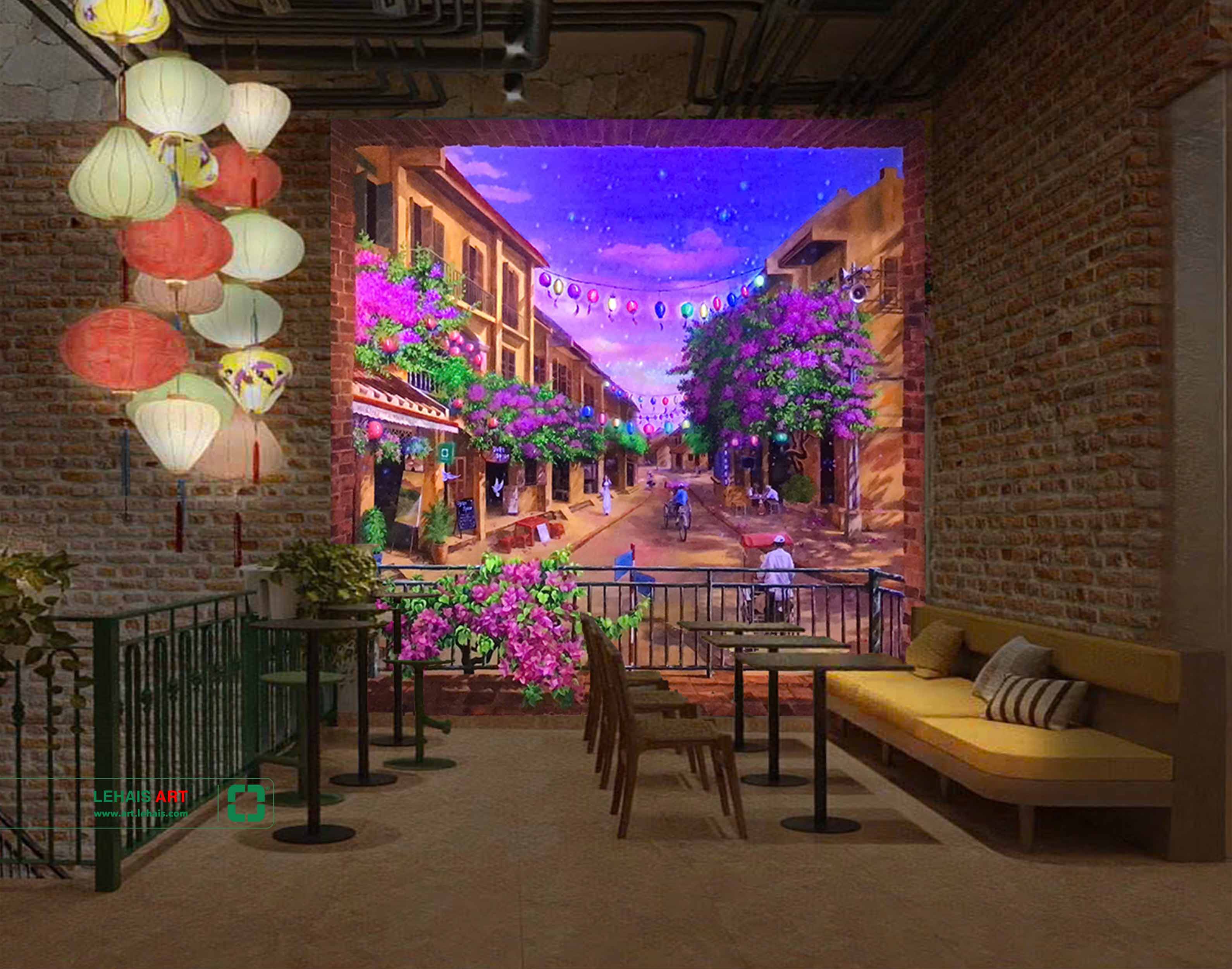Lacquer painting art - Explore the Vietnamese lacquer painting line
The art of lacquer was officially introduced to Vietnam in the 30s of the 20th century through the Indochina Fine Arts College, which has produced many famous lacquer artists at home and abroad. Over a long period of development, Vietnamese lacquer has achieved impressive achievements, recognized and highly appreciated by the world.

Lacquerware art appeared in Vietnam very early, lacquer paintings found in ancient tombs in Vietnam dating from the third century to the fourth century BC. Over the centuries, Vietnam's master artists and artisans have mastered the techniques of using lacquer for decoration and preservation purposes. Lacquer painting has a unique style, different from silk, oil painting or watercolor painting.
Artistic features
Traditional lacquer comes in three colors - brown, black, and vermilion. By the 1930s artists began to use a new technique called chisels, which provided a richer blend of colors and increased a sense of size and distance.
Painting is done on wood. It is covered with a cloth coated with lacquer tree resin and then covered with a layer of sap mixed with the soil. The plank is then sandpaper and re-coated with a layer of hot sap. Once polished, it produces a smooth black surface with a glow. The artist uses hot lacquer to draw outlines and the colors are applied layer by layer after the underlying layer has dried.

The work of Dawn on the farm by painter Nguyen Duc Nung (1914-1993)
Finishing stages include polishing and re-cleaning the painting. This process sounds like a cruel treatment of artwork, but it is actually done very meticulously. The result is a brilliant picture.
Through years of experimenting, artisans use other materials such as vegetable ash, eggshell crushing, gold and silver to adorn their work. These materials help modern artists express their egos and add creativity and style to their artwork.

The lacquer work of painter Nguyen Gia Tri (1906-1993)
History of lacquer painting in Vietnam
The art of lacquerware appeared in Vietnam from the 3rd to the 4th century BC, but was only really disseminated in Vietnam methodically and professionally through the lacquer art course led by Joseph Inguimberty, a Lecturer at the Indochina College of Fine Arts in 1927. His introduction of lacquer art into the art curriculum began in 1937. Although the programmed courses are similar to schools art in Europe, Vietnamese artists have succeeded in bringing Vietnamese breath and their personal style into works of art.
Vietnamese art lovers are always proud of having talented painters who constantly develop the lacquer painting line. Vietnamese modern art works such as: Ngon Giong by Nguyen Tu Nghiem; Screen of Nguyen Gia Tri; The admission of the Party at Dien Bien Phu by Nguyen Sang and many other authors has created the image of Vietnamese lacquer in the modern art of the twentieth century.
Famous Vietnamese lacquer artists
Some artists who studied lacquerware at the Indochina College of Fine Arts have become very famous, such as Nguyen Gia Tri. Other famous lacquer painters of this period include: Cong Van Trung, Pham Ha, Nguyen Hang, Tran Van Can, Nguyen Duc Sung, Nguyen Van Ty, Hoang Tich Chu, Nguyen Van Binh, Duong Huong Minh, Nguyen Sy. Ngoc, Tran Dinh Tho, Nguyen Sang, Huynh Van Gam, Ta Thuc Binh, Nguyen Tu Nghiem, Phan Ke An, Duong Bich Lien, Nguyen Kim Dong, Le Quoc Loc, Dang Tin Tin.
- Nguyen Gia Tri (1906-1993)

Village work, author Nguyen Gia Tri
Nguyen Gia Tri is one of the leading painters of the Vietnamese lacquer painting village, especially in the years 1938 to 1944. The lacquer painting was at its peak. His work is carefully crafted and has a marvelous beauty. Through layers and lacquer, Nguyen Gia Tri has experimented with new colors such as yellow to create a velvet look, and various materials such as eggshell and gemstones.
- Nguyen Khang (1911-1989)

Peace and Friendship, author Nguyen Khang
Nguyen Khang, born in Hanoi, owns many famous lacquer works in Vietnam. Nguyen Khang is one of the founding members of the College of Industrial Fine Arts in Vietnam and is the Principal of this school from 1962-1974. Nguyen Khang is also one of the great contributors to the creation and development of lacquer paintings in Vietnam by introducing a variety of materials into paintings.
- Hoang Tich Chu (1912-2003)

The work of mountainous work change group, author Hoang Tich Chu
Hoang Tich Chu, from Hebei, specializes in lacquer painting. He graduated from Vietnam College of Fine Arts. Although he used a variety of mediums, including graphic arts and oil, he was still famous for the art of lacquer and was later taught at the College. His paintings are on display in the Vietnam Fine Arts Museum, Moscow Museum of Oriental Fine Arts and other private collections.
- Huynh Van Gam (1922-1987)

The work of Ms. Lien, authored by Huynh Van Gam
Huynh Van Gam was born in Chau Thanh district, Long An province. He graduated from Indochina Fine Arts College in 1945. In 1944, he won the Unique Salon Award while still studying at the school, and in 2000, he was awarded the Ho Chi Minh Prize for Literature and Art. His revolutionary works of art had a great impact on Vietnamese art during that time. Huynh Van Gam is also the editor-in-chief of the first Vietnamese literature magazine.
- Dang Tin Tin (1945)

Construction works (1979), author Dang Tin Tuong
Dang Tin Tuong was born in Binh Giang, Hai Duong province. He holds a bachelor's degree from Hanoi University. He is a self-taught artist with only a handful of graphics courses at the Hanoi Academy of Fine Arts. He worked at the Curriculum Department of the Hanoi Fine Arts Institute, then since 1984 he worked at the National Fine Arts Workshop under the Ministry of Culture. He is famous for his lacquer and silk paintings, as well as for drawing acrylic and watercolor on "do" paper. His works are on display at the Vietnam Museum of Fine Arts, the Vietnamese Government Guest House and the Museum of Ethnic Miami in the US.









